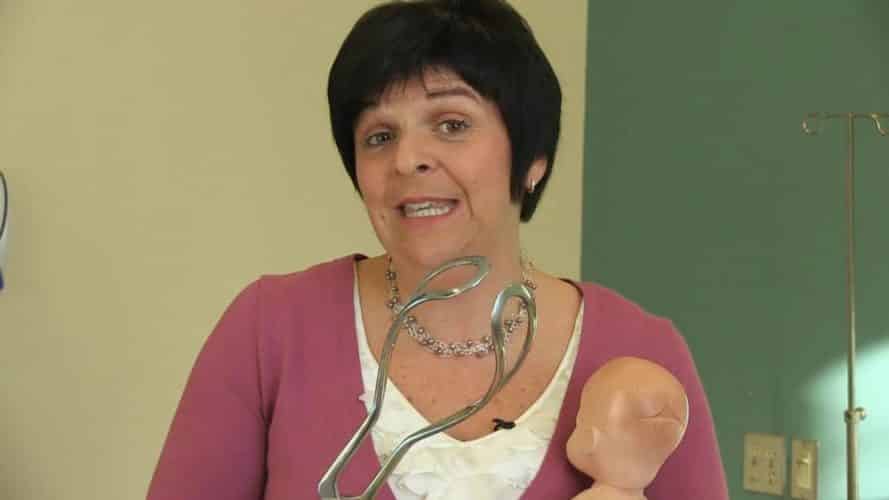The use of forceps is never the first choice for a doctor during childbirth. Forceps are a tool to either facilitate the baby’s descent into their mother’s pelvis or to speed birth in certain circumstances. While no one wants to see the doctor have to use them, they’re useful during a difficult labour or delivery. It’s important to talk about it during prenatal classes because you never know when forceps might be necessary during the last stage of labour.
Forceps are a metal instrument that looks like two opposing spoons. It’s inserted into the vagina and placed on each side of the baby’s head. It can be used to rotate a poorly aligned head or help exit the baby when there’s fetal distress (lowering heartbeat). This procedure will never take place without giving the mother local or regional anesthesia. An experienced health professional will evaluate:
- if the mother’s pelvis seems adequate;
- if their bladder is empty;
- if the way the baby is descending is known and allows for this manoeuvre;
- if the membrane is punctured;
- and if the baby is engaged before proceeding with the actual technique.
If the baby is judged to be too large, the cervix isn’t completely dilated, or if the baby is still too high up in the pelvis, forceps won’t be used. A caesarian will be more appropriate.
It’s understandable that you might be scared of this procedure when I talk about this instrument. However, I should add that this tool allows us to prevent many complications during difficult births. That is what preparing for the delivery of our child is—learning about different eventualities.
The most common indications for the use of forceps are when the baby stops descending, fetal distress, the poor positioning of the head, maternal fatigue or heart disease or other issues for the mother.
It’s understandable that you might be scared of this procedure when I talk about this instrument. However, I should add that this tool allows us to prevent many complications during difficult births. Picture yourself in an emergency situation and you will see it in a different light. For example, lying in a hospital bed, in labour, and your baby’s heartbeat is crashing. I must admit that I don’t know any parents that would refuse forceps if they have the chance of getting a healthy baby, with all its faculties. Suddenly the technique becomes less foreboding. For more details about this topic, you can watch my video Childbirth in a Birthing Room.
After a birth using forceps, I often suggest to parents that they get their baby examined by an osteopath, physiotherapist or chiropractor skilled in working with babies. They should check their structures (skull sutures, displacement, neck [torticollis], abnormal compressions or stresses) to prevent associated problems. The mother should also be checked in the postpartum period.
If you have had similar experiences, please share them with us.
Take care and talk soon!
Associated articles on the topic:
- The realities of childbirth
- Epidural or spinal anesthesia
- Experiencing a caesarian
Videos associated with the topic:
- Cesarean childbirth
- Evolution of labour
- Analgesics and anesthetics
- Support during labour
Talk soon,
Marie
The Baby Expert
Feel free to share your experiences in the comment section.


